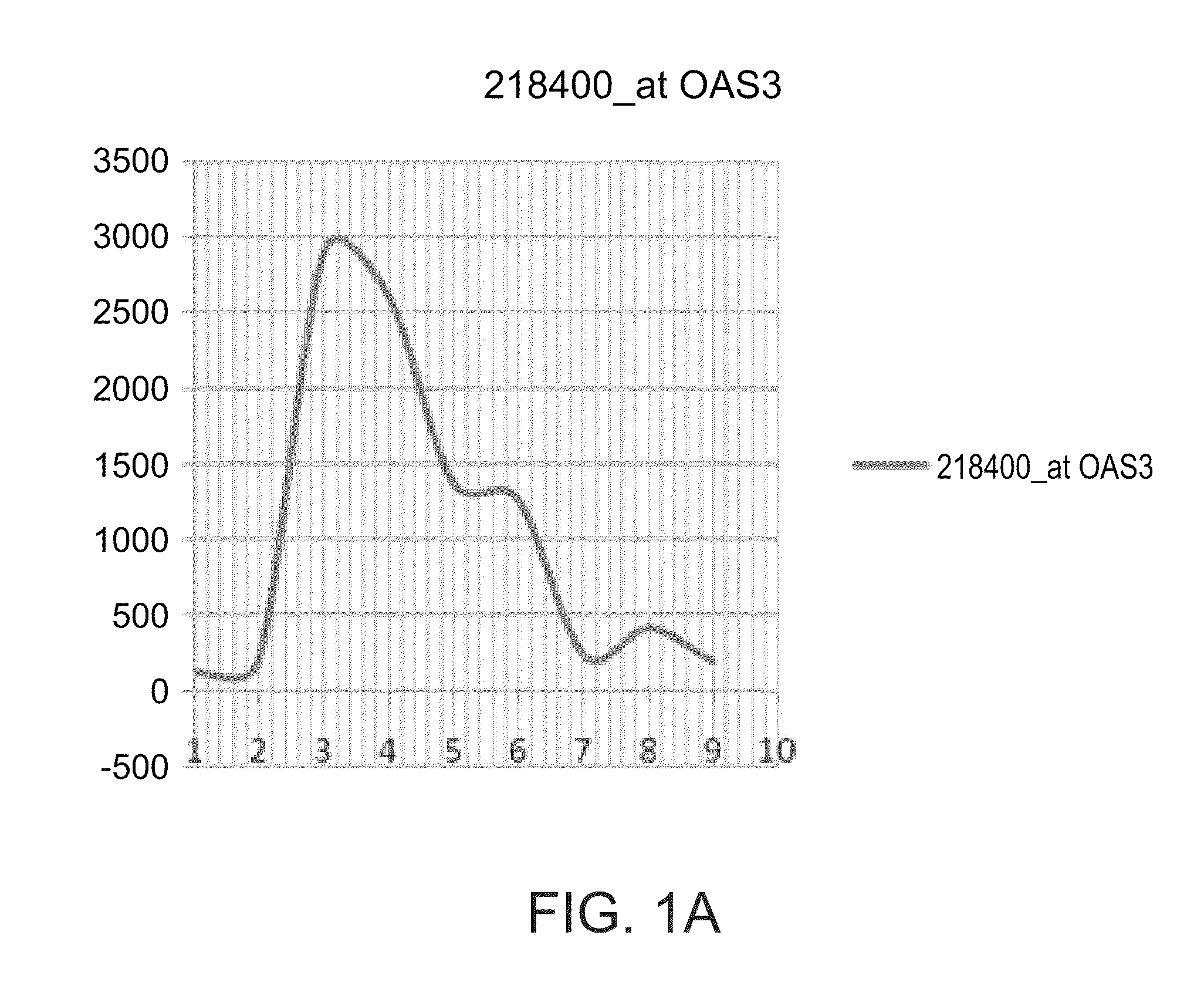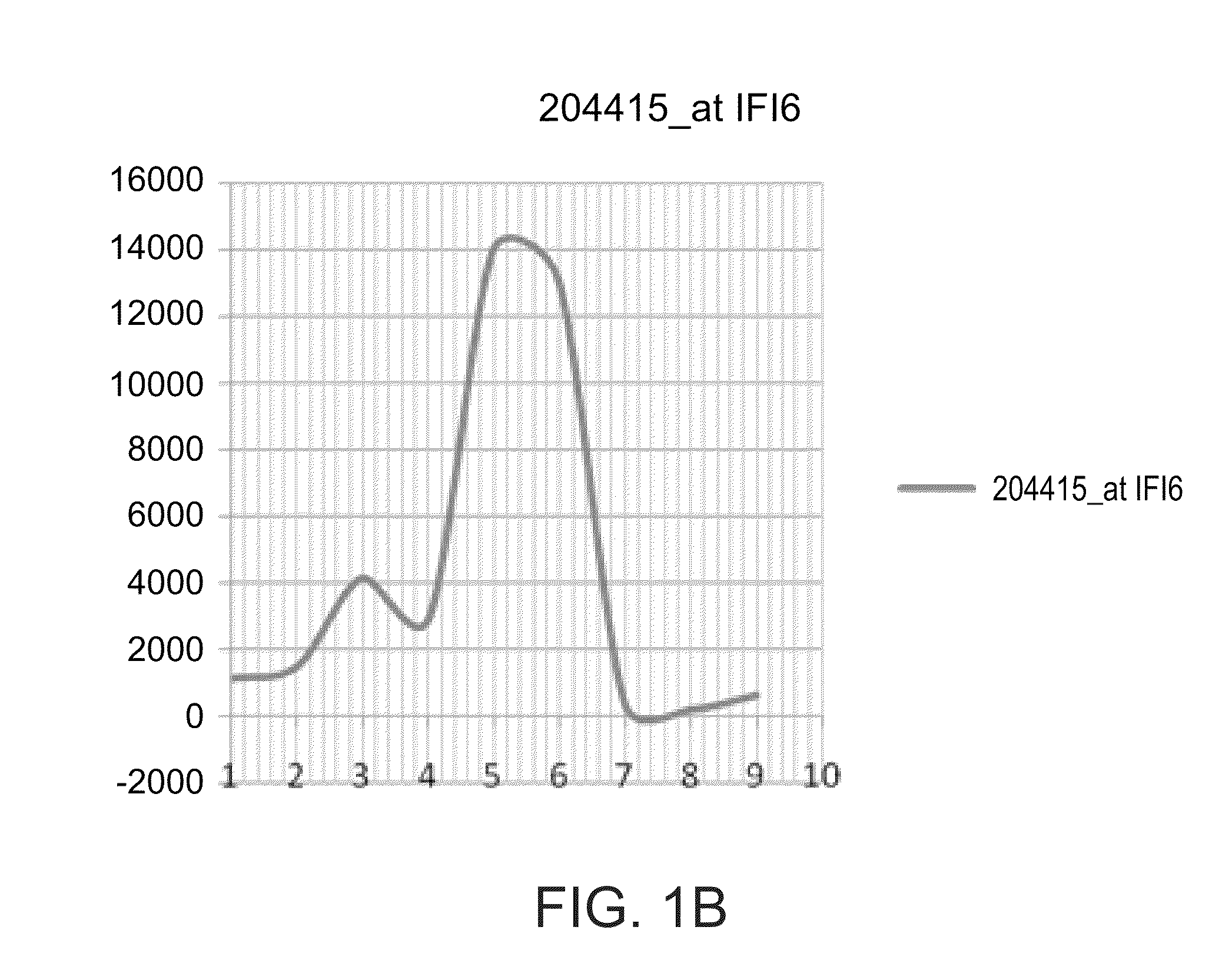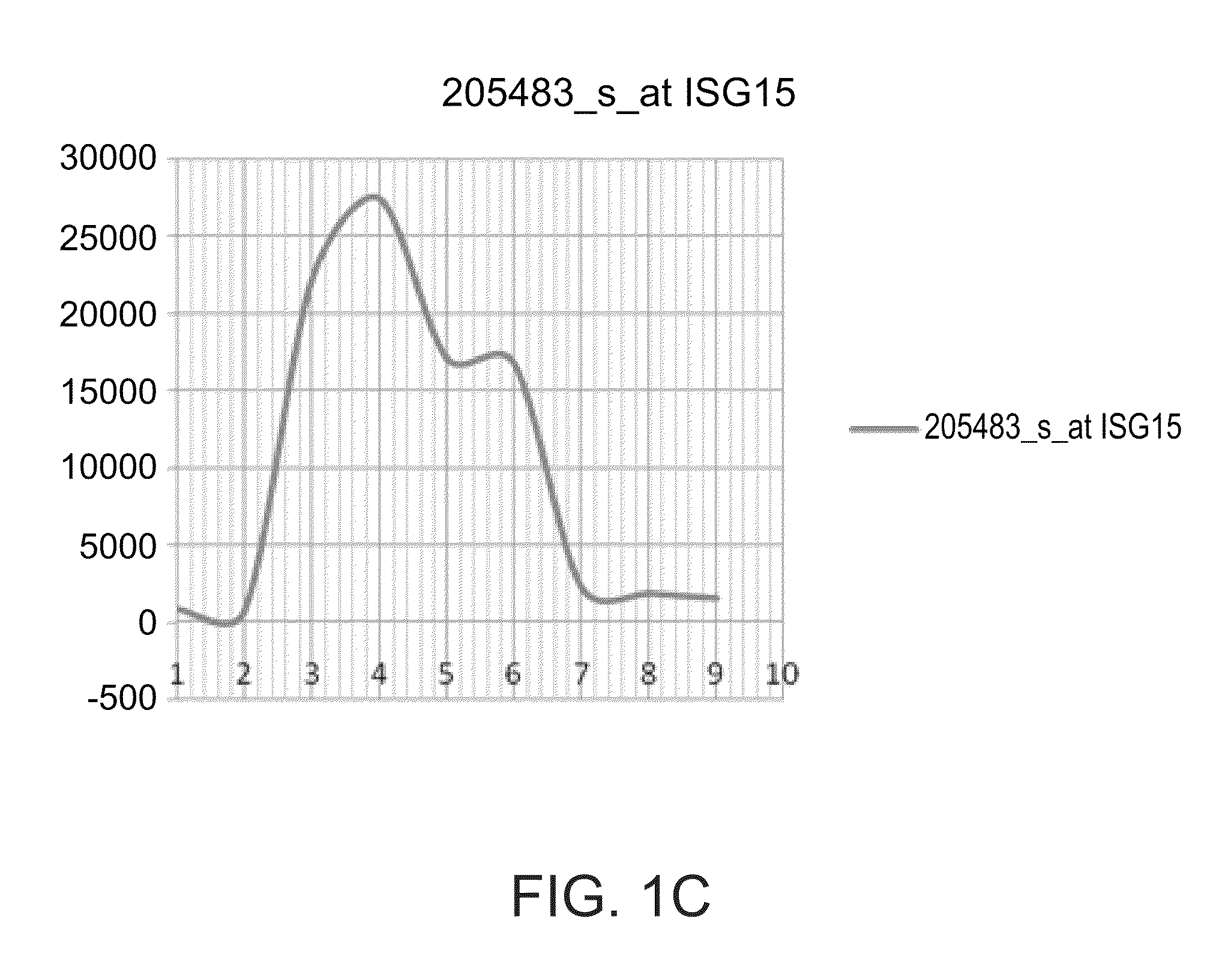Methods of predicting responsiveness to interferon treatment and treating hepatitis c infection
a technology of interferon and responsiveness, applied in the field of methods of predicting responsiveness to interferon treatment and treating hepatitis c infection, can solve the problem that half of the population cannot benefit from the treatmen
- Summary
- Abstract
- Description
- Claims
- Application Information
AI Technical Summary
Benefits of technology
Problems solved by technology
Method used
Image
Examples
example 1
Identification of Genes which are Differentially Expressed Between Responders and Non-Responders to Interferon Treatment
A Static Method
[0294]In order to get a high resolution of the relative importance of the dominate genes which determine the fate of interferon I treatment, the present inventor has developed a statistical scoring tool that is based on the quantitative and qualitative ranking of all the genes in all possible permutations. The assumption behind this process is that the most important genes determining the outcome of treatment are the ones most persistent in all possible combinations of patient comparison selection. In the case of the Chen et al., 2005 dataset [L. Chen, I. Borozan, J. Feld, J. Sun, L. Tannis, C. Coltescu, J. Heathcote, A. Edwards, I. Mcgilvray. “Hepatic Gene Expression Discriminates Responders and Nonresponders in Treatment of Chronic Hepatitis C Viral Infection”; Gastroenterology, 128:1437-1444; Hypertext Transfer Protocol: / / 142.150.56.35 / ˜LiverArray...
example 2
Validation of the Predictive Power of the Signature Genes to Interferon Response in Independent Data Sets
[0297]Experimental Procedures
[0298]The expression levels of the genes-of-interest were obtained from publicly available data bases [Hypertext Transfer Protocol: / / World Wide Web (dot) ncbi (dot) nlm (dot) nih (dot) gov / projects / geo / ] using the Gene Expression Omnibus Accession No. GSE11190. Analysis of data was performed by custom programs written in MATLAB.
[0299]Validation of results was performed by analysing RNA extracted from paraffin embedded liver biopsies which were obtained from of HCV type 1 patients before the first injection of interferon (i.e., in time 0, naïve patients).
[0300]Results
[0301]The OAS3, IF16, ISG15, OAS2 and IFIT1 gene signature is differentially expressed between interferon responder and non-responders—As shown in FIG. 1 and Table 3 below, the OAS3, IF16, ISG15, OAS2 and IFIT1 are up regulated in non-responders to interferon treatment as compared to respo...
example 3
Identification of a Genetic Switch Immediately after Interferon Treatment as a Predictor for Response to Interferon Treatment
[0303]The expression levels of the genes-of-interest were obtained from publicly available data bases [Hypertext Transfer Protocol: / / World Wide Web (dot) ncbi (dot) nlm (dot) nih (dot) gov / projects / geo / ] using the Gene Expression Omnibus Accession No. GSE11190. Analysis of data was performed by custom programs written in MATLAB.
[0304]Results
[0305]The expression levels of the OAS3, IF16, ISG15, OAS2 and IFIT1 gene signature is significantly upregulated among interferon responders following the first interferon treatment while being unchanged among non-responders—Based on the results presented in FIGS. 1A-E, Table 2 and FIG. 3, the present inventor has hypothesized that the gene signature reflects an on / off situation; thus injection of interferon to “on” genes at 0 time (i.e., before the first injection of interferon, naïve subjects with respect ...
PUM
| Property | Measurement | Unit |
|---|---|---|
| time | aaaaa | aaaaa |
| time | aaaaa | aaaaa |
| color index | aaaaa | aaaaa |
Abstract
Description
Claims
Application Information
 Login to View More
Login to View More - R&D
- Intellectual Property
- Life Sciences
- Materials
- Tech Scout
- Unparalleled Data Quality
- Higher Quality Content
- 60% Fewer Hallucinations
Browse by: Latest US Patents, China's latest patents, Technical Efficacy Thesaurus, Application Domain, Technology Topic, Popular Technical Reports.
© 2025 PatSnap. All rights reserved.Legal|Privacy policy|Modern Slavery Act Transparency Statement|Sitemap|About US| Contact US: help@patsnap.com



